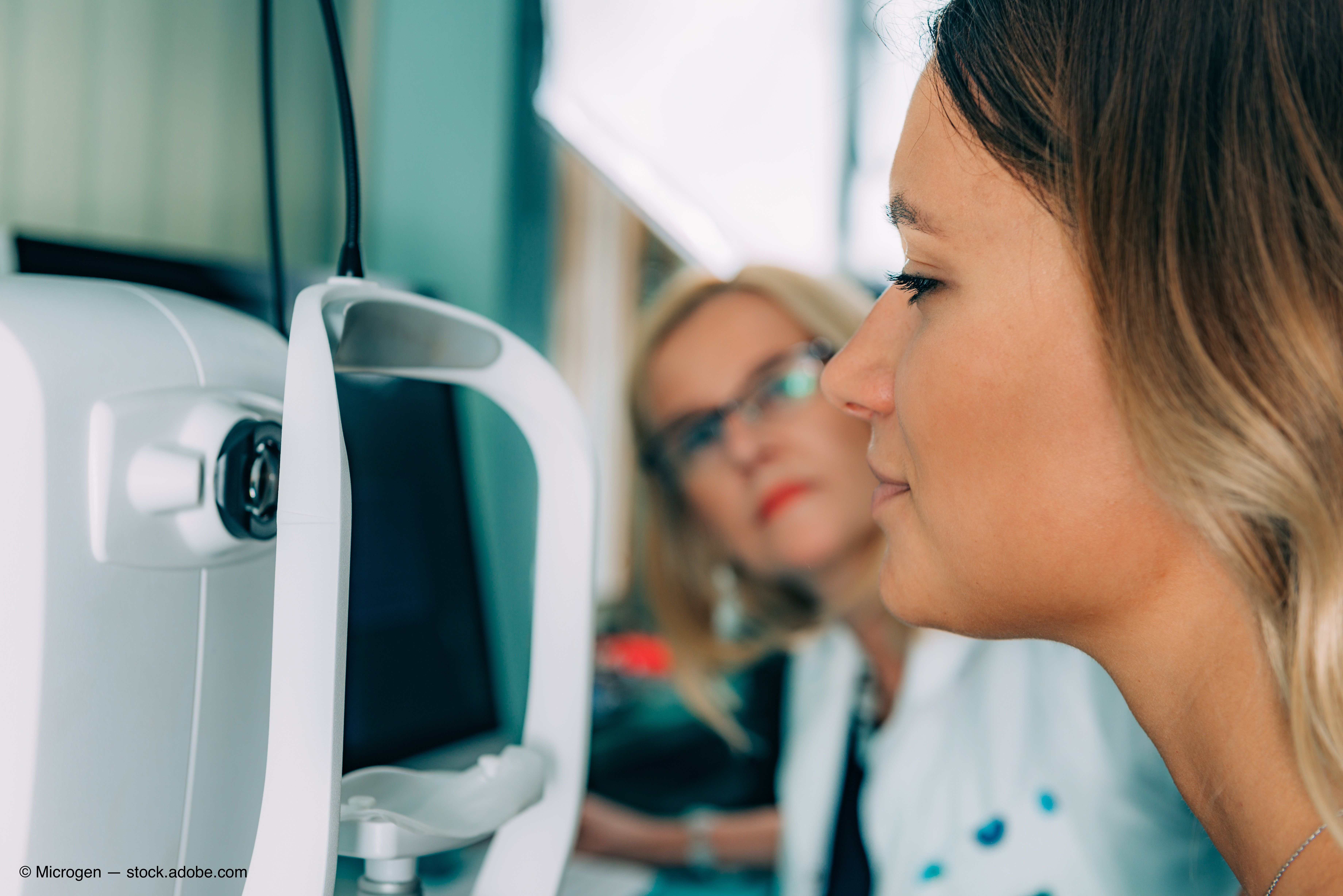Article
Diagnosing LSCD noninvasively: SD-OCT preferred technology
Author(s):

Full-field option facilitates measurement of limbal crypt volume in patients
This article was reviewed by Vincent M. Borderie, MD, PhD
Spectral-domain optical coherence tomography (SD-OCT) can be used to obtain highly detailed images of ocular tissues in ex vivo and in vivo assessments of both the corneal epithelium and limbal niche status.
Vincent M. Borderie, MD, PhD, showed the results he and colleagues have obtained using ex vivo full-field OCT when evaluating the morphology of the limbal niche. He discussed how complex the limbal niche structure is when observed using this technology.
Related: Technology assisting surgeons in capturing spectral-domain OCT
“When assessing human donor corneas using full-field OCT, the limbal niche can be observed in 90% of normal human corneoscleral rims,” he said. “The limbal crypts extend between the palisades of Vogt and appear as radial in about 74% of cases and/or as rounded in 23% of cases.”
Dr. Borderie also noted that these structures often are interconnected by subscleral circumferential crypts in 56% of cases. He is professor of ophthalmology and chairman, Centre Hospitalier National d’Ophtalmologie des 15-20, Sorbonne University, Paris.
More crypts in humans are seen on the vertical meridian compared with the horizontal meridian.
Full-field OCT facilitates measurement of the limbal crypt volume. When the limbal stem cells are retrieved, they can be cultured at low density with mitomycin-arrested 3T3 feeders. With this protocol, he explained, the colony-forming efficiency can be demonstrated to increase with the limbal crypt volume.
“It makes sense to precisely analyze the limbal niche structure because it reflects the number of stem cells that are present in a given area,” Dr. Borderie said.
Related: OCT key tool in determining glaucoma progression
Limbal stem cell deficiency (LSCD)
Dr. Borderie and his colleagues developed a protocol to assess LSCD in vivo using SD-OCT. They first look at the central cornea and then the limbal regions in the four quadrants and obtain cross sections parallel to the limbus, cross sections perpendicular to the limbus, and en-face sections.
Images of the central cornea in different eyes clearly show the differences between a normal cornea and one with advanced LSCD, in which the variability of the corneal epithelial thickness is much greater.
The investigators compared SD-OCT cross sections parallel to the limbus and used a scale of 0 to 3 to grade the findings in LSCD. Grade 0 indicated a cornea with advanced LSCD characterized by a flat hyperreflective stromal profile covered by a thin limbal epithelium and grade 3 indicated a normal cornea with clear, high, regular undulations of the limbal stromal surface forming ridges parallel to each other; in grade 3, the limbal niche is clearly visible with the palisades of Vogt and limbal crypts visible and even some buried limbal crypts, Dr. Borderie noted.
Related: Confocal microscopy: Seeing what does not meet the eye
In SD-OCT cross sections perpendicular to the limbus, grade 2 indicates a normal cornea that is characterized by clear thickening with undulations over the entire ocular surface epithelium. In contrast, in grade 1, indicating advances LSCD, there is a completely flat profile.
In addition, in a normal cornea, the transition can be seen between the hyperreflective conjunctival epithelium and the hyporeflective corneal epithelium.
In SD-OCT en-face sections of the limbal region, in a grade 2 normal cornea, the limbal niche is clearly visible with the palisades of Vogt and limbal crypts visible; in a grade 0 cornea with advanced LSCD, the features of the limbal niche are not visible. Dr. Borderie and colleagues reported their results (American Journal of Ophthalmology. 2018;190:179-190).
Related: OCT data useful in hands of anterior segment specialties
Aniridia-associated keratopathy
Subepithelial fibrosis and LSCD are evident in this disease. The epithelial map showed the high variability of the corneal epithelial thickness. The SD-OCT cross sections showed that perpendicular and parallel to the limbus the profile was flat in all quadrants. The SD-OCT en-face sections no features of the limbal niche are visible. The diagnosis of aniridia-associated keratopathy was confirmed by in vivo confocal microscopy.
The study included 22 eyes with LSCD and 10 normal controls.
“In LSCD, the basement membrane and Bowman’s layer are lost in the vast majority of eyes and subepithelial fibrosis is present in 90% of cases,” Dr. Borderie said.
Evaluation of the limbus shows much lower scores in cases of LSCD. In the disease population, poorer visual acuity was significantly associated with the higher variability of the corneal epithelial thickness and lower limbal scores.
Dr. Borderie concluded that SD-OCT provides in vivo assessment of both the corneal epithelium and limbal niche status.
“The technologic advantage is that it provides a wide field of view and is a non-contact technique that permits detection of the limbal niche in eyes in which the condition of the ocular surface is poor,” he said. “The forthcoming development of in vivo full-field OCT will allow all information, that is, the information provided by in vivo confocal microscopy and SD-OCT, to be obtained with a single wide-field non-contact technology featuring cell resolution.”
Read more by Lynda Charters
Vincent Borderie, MD, PhD
E: vincent.borderie@upmc.fr
Dr. Borderie is a consultant/advisor to Chiesi and Dompe and has received lecture fees from Optovue Inc.
Newsletter
Don’t miss out—get Ophthalmology Times updates on the latest clinical advancements and expert interviews, straight to your inbox.





